Do you have a question about the Piper TOMAHAWK and is the answer not in the manual?
| Manufacturer | Piper Aircraft |
|---|---|
| Model | PA-38 Tomahawk |
| Role | Trainer aircraft |
| First flight | 1977 |
| Number built | 2, 484 |
| Engine type | Lycoming O-235-L2C |
| Horsepower | 112 hp (84 kW) |
| Max takeoff weight | 1, 670 lb (757 kg) |
| Wingspan | 34 ft 0 in (10.36 m) |
| Height | 9 ft 0 in |
| Range | 500 miles |
| Rate of Climb | 720 ft/min |
Overview of the Pilot's Operating Handbook and its purpose as an operating guide.
Details on the aircraft's engine specifications, including manufacturer, model, and performance metrics.
Information on fuel capacity, usable fuel, grade, octane, and alternate fuels for the aircraft.
Specifies the normal and utility category maximum takeoff and landing weights.
Definitions of symbols, abbreviations, and terminology used in the handbook.
Details of initial revisions made to the handbook, covering multiple pages and items.
Details of Revision 4, including relocated material, added items, and revised paragraphs.
Details of Revision 7, covering revised warnings, figures, tables of contents, and paragraphs.
Details of Revision 11, covering revised paragraphs and tables of contents.
Details of Revision 14, including updated copyright and revised paragraphs.
Specifies design maneuvering speed (VA) and caution regarding its use at different weights.
Details engine operating limits, oil pressure, fuel pressure, and propeller specifications.
Provides forward and rearward center of gravity limits for normal and utility categories.
Details service life limits for various aircraft components like springs, wings, and spar attachment plates.
Specifies total capacity, unusable fuel, usable fuel, and fuel remaining indications.
Checklist of speeds and engine inoperative procedures for takeoff and flight.
Detailed procedures for engine power loss during takeoff (airborne/not airborne) and in flight.
Procedures for engine fire during start and fire in flight, including electrical fires.
Procedure for alternator failure, including reducing electrical load and resetting the overvoltage relay.
Step-by-step procedure for recovering from an unintentional spin.
Procedures for loss of pitot or static pressure, including using alternate sources and checking pitot heat.
Significant airspeeds for safe operation, including climb, turbulent air, and landing speeds.
Comprehensive checklist for preflight, engine start, taxiing, takeoff, climb, cruising, and landing.
Procedures for normal, short field, and soft field takeoffs, including flap settings and speeds.
Detailed procedures for normal, short field, and soft field takeoffs.
Pilot's responsibility to ensure the airplane remains within allowable weight and CG envelope.
Procedure for intentional spins, including pre-spinning checks and recovery techniques.
Basis of performance data: flight test data corrected for standard conditions and expanded.
Step-by-step example of flight planning, covering aircraft loading, takeoff, climb, cruise, and descent.
List of figures detailing aircraft performance data, including speeds, ranges, and endurance.
Importance of operating within the weight and CG envelope for performance and stability.
Procedure for determining basic empty weight and CG location, including preparation and leveling.
Importance of using current values and updating records for any equipment changes.
Process of calculating loaded weight and CG for flight, using loading graphs and C.G. envelopes.
List of optional equipment with weight, arm, and moment data for configuration definition.
General description of the Piper Tomahawk as a single-engine, low-wing monoplane.
Details on the aircraft's primary structure, including fuselage, wings, and construction materials.
Description of the Lycoming engine, propeller, cowlings, and cooling systems.
Details on the fixed landing gear, hydraulic brake system, parking brake, and optional toe brakes.
Description of dual flight controls, elevator trim, rudder, and wing flaps operation.
Details on fuel storage, capacity, tank selector, quantity gauges, and fuel drains.
Description of the electrical system components: alternator, battery, switches, and circuit breakers.
Layout of the instrument panel, including standard and optional instruments, and controls.
Explanation of the vacuum system's function, components, and operation for gyro instruments.
Description of the pitot-static system, including sources, valves, and heated pitot head.
Details on cabin heating and ventilation, including air intakes, outlets, and controls.
Description of cabin features like adjustable seats, safety belts, and standard interior equipment.
Description and operation of the Emergency Locator Transmitter (ELT).
Guidelines for handling, servicing, and maintenance, and importance of contacting Piper Service Centers.
Details on inspection items, intervals, and the requirement for qualified mechanics and compliance with bulletins.
Procedures for towing, taxiing, parking, and mooring the airplane safely.
Information on wheel assemblies, tire inflation, and servicing the nose gear oleo strut.
Procedures for servicing, requirements, filling, and draining the fuel system.
Procedures for cleaning the engine compartment, landing gear, and exterior surfaces.
Installation and removal procedures for the winterization plate and kit.
Provides valuable safety tips for operating the Piper Tomahawk.
Tips on takeoff trim, takeoff speed, flap operation, circuit breaker reset, and strobe light usage.
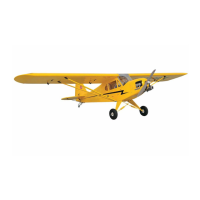
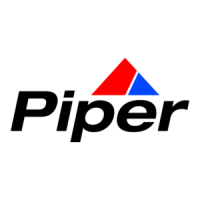


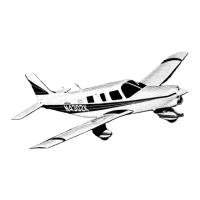
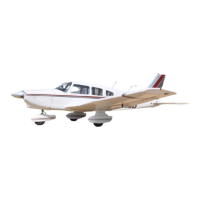

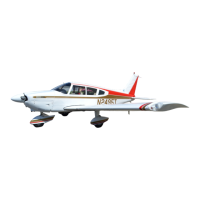
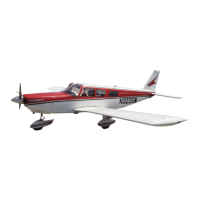

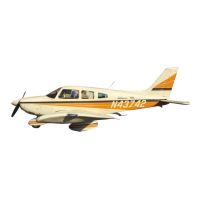
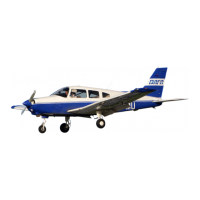
